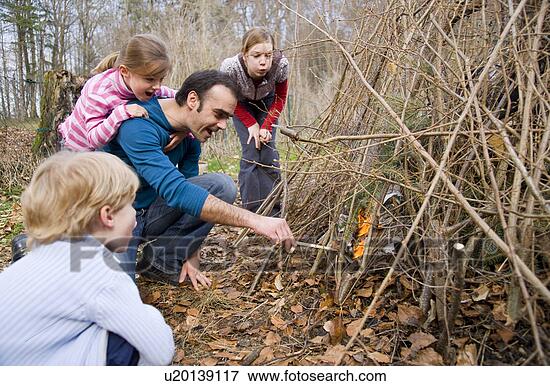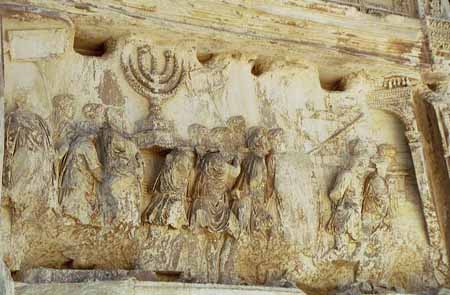I think I’ll put in my last load of laundry tomorrow so I can take in any clothing hanging out on the line to dry, before Thursday night when the fires will be set. I make a reminder for myself to close all the windows of the house tightly in order to try and prevent everything  from smelling like burning wood. Because this Thursday night, the air of the entire country will be filled with the smoke of giant bonfires.
from smelling like burning wood. Because this Thursday night, the air of the entire country will be filled with the smoke of giant bonfires.
I know I sound too much like a practical stuffy grown up, but the truth is, the holiday of Lag Baomer is great fun and my kids, especially, can’t wait. It’s the holiday of bonfires, and what child doesn’t like having a legitimate opportunity to play with fire?
It’s been weeks since my boys have begun collecting wood. Since Passover, they’ve been coming home from school, dumping their knapsacks in the hall, grabbing a bottle of water, and running out to join their friends in the fun activity of wood collection, coming home later, sweaty, filthy and spotted with splinters. The neighborhood has been filled with the scraping sounds of old wooden doors and broken wooden chairs being dragged through the streets with ropes. Small children carry sawed-down tree trunks in their toy wheelbarrows, and teenagers push borrowed supermarket wagons filled with smaller logs, twigs and branches. As Lag Baomer approaches, experienced contractors put signs on their building sites filled with tempting building materials, telling eager kids what piles of wood they can help themselves to and which wooden planks and scaffolding should be left alone.
It’s a great night. The anticipation builds to a high pitch as parents get into the spirit by driving last batches of wood to their kid’s chosen bonfire spot. The local community council has made sure to clear certain areas in the neighborhood of overgrown weeds and brush, knowing that every open, flat spot will be the site of another fire. Little kids are almost frantic with excitement waiting for darkness to fall. They’re slightly envious of the “older kids” who get to do their own bonfires with their friends and youth groups but are still thrilled to be part of their parents’ fires, waiting for the grown ups to throw that first match onto the prepared pyre.
And then, for a while no entertainment is necessary. Everyone vies for the chance to throw another log or branch into the fire, everyone ooh-ing and ah-ing as sparks fly to the sky.  Hot dogs are gobbled up impatiently, a bit scorched on the outside and undercooked on the inside; potatoes, wrapped in foil, are rolled into the embers to be baked. Then the marshmallows get speared onto wooden skewers and the sticky, hot confections get roasted and eaten. Then, somehow, there’s always a point where things get quiet. Bellies full, kids and grown ups alike settle down to stare into the fire. Jewish tradition has always compared the radiance and endurance of fire to the enduring strength and passion of the soul. And, sitting around, gazing at the blaze, it is comforting to feel the conviction that the spark of the Jewish people will never be extinguished. The sweet little faces glow enchantingly, mesmerized by the flames; the adults look more pensive, and softly, discussions spring up about the meaning of the holiday.
Hot dogs are gobbled up impatiently, a bit scorched on the outside and undercooked on the inside; potatoes, wrapped in foil, are rolled into the embers to be baked. Then the marshmallows get speared onto wooden skewers and the sticky, hot confections get roasted and eaten. Then, somehow, there’s always a point where things get quiet. Bellies full, kids and grown ups alike settle down to stare into the fire. Jewish tradition has always compared the radiance and endurance of fire to the enduring strength and passion of the soul. And, sitting around, gazing at the blaze, it is comforting to feel the conviction that the spark of the Jewish people will never be extinguished. The sweet little faces glow enchantingly, mesmerized by the flames; the adults look more pensive, and softly, discussions spring up about the meaning of the holiday.
In the 1st Century C.E. the Romans destroyed the Second Temple and many Jews were exiled from the Land of Israel. The remaining Jews suffered from persecution from the Romans and were subject to many draconian edicts, including the forbidding of the kindling of fires from the hilltops to proclaim the new lunar month. This was devastating because the Jewish calendar and all its holidays are based on lunar cycles and the people  waited for the signaling. A great Jewish sage, Rabbi Akiva, inspired Bar-Kochba, the brave military leader, to gather a band of soldier-students in order to restore the land to the Jews. The revolt against the Roman Empire lasted more than three years. Bar-Kochba fought against the tyranny, appropriately using hilltop fires for battle signals. Lookouts stationed on other mountaintops would see that a fire had been lit and would light their own fire and continue the chain of communication. Twelve thousand students died in the war and on Lag Baomer, 33 days after the start of the Passover holiday, the deaths stopped. This was a significant turning point. The revolt successfully established a sovereign Jewish state for over two years. Religious rituals were once again observed and even the bonfires were reinstated! It was an era of Jewish independence, an era where the Jewish people felt that the redemption of Israel was possible.
waited for the signaling. A great Jewish sage, Rabbi Akiva, inspired Bar-Kochba, the brave military leader, to gather a band of soldier-students in order to restore the land to the Jews. The revolt against the Roman Empire lasted more than three years. Bar-Kochba fought against the tyranny, appropriately using hilltop fires for battle signals. Lookouts stationed on other mountaintops would see that a fire had been lit and would light their own fire and continue the chain of communication. Twelve thousand students died in the war and on Lag Baomer, 33 days after the start of the Passover holiday, the deaths stopped. This was a significant turning point. The revolt successfully established a sovereign Jewish state for over two years. Religious rituals were once again observed and even the bonfires were reinstated! It was an era of Jewish independence, an era where the Jewish people felt that the redemption of Israel was possible.
The mood begs for songs. No Lag Baomer bonfire is complete without the singing. And it doesn’t matter whether it’s the youth groups with their prepared song booklets and a  counselor with a guitar, or the older folks with their overhead projector screening the lyrics and someone playing the accordion. The songs are the same that night. The spirited songs of the building of the land, songs that speak of a love of a people for their country. Voices ring out in the dark, proudly: “Here I was born…here I built my home with my own hands…” “I promise you my little one that this will be the last war…” “You will see, you will see, how good it will be… next year.” “I don’t have another land.”
counselor with a guitar, or the older folks with their overhead projector screening the lyrics and someone playing the accordion. The songs are the same that night. The spirited songs of the building of the land, songs that speak of a love of a people for their country. Voices ring out in the dark, proudly: “Here I was born…here I built my home with my own hands…” “I promise you my little one that this will be the last war…” “You will see, you will see, how good it will be… next year.” “I don’t have another land.”
The story of Lag Baomer, of pioneering times, of Biblical heroes from long ago, is not lost on anyone sitting around the fire. We know we are still pioneering, trying to find the strength to settle this land, waiting to proclaim our independence and see the coming of the Redemption.
Shalom,
Shira Schwartz
Christian Friends of Israeli Communities
